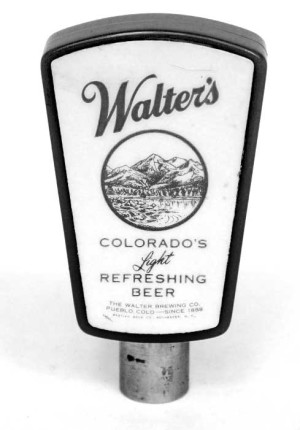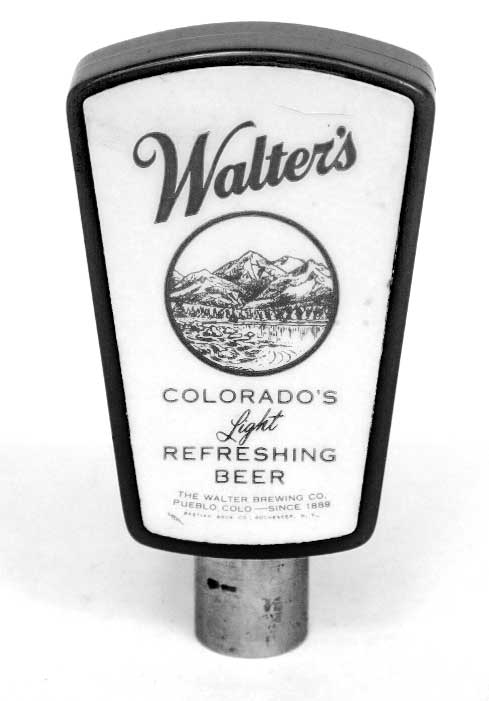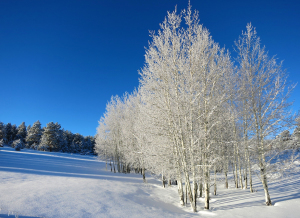Mountains by Jane Koerner
• Colorado has 637 13ers (mountains over 13,000 feet
but under 14,000).
• Mounts Bierstadt, Grays and Torreys are the most
popular 14ers for peak baggers.
• There are seven total mountain ranges in Colorado:
the San Juans, the Elk Range, the Sawatch (which
include the Collegiates), the Sangre de Cristos, the
Park Range, the Front Range and the Gore Range,
according to the Colorado Mountain Club.
• H.W. Stuckle, a member of Hayden Survey, has the
first recorded ascent of Mount Elbert by a white man
in 1874.
• Anna Elizabeth Dickinson was the first white woman
on record to climb Longs Peak, in 1873.
• The first recorded ascent of Pikes Peak was botanist
Dr. Edwin James and two other men from the Long
expedition of 1820.
• There are 28 active ski areas in Colorado, according
to Wikipedia, at least four of which are marginal
operations with a rope tow or one old chair.
• Breckenridge claims to have the highest ski run with
the Imperial Lift, which tops out at 12,840 feet.
Water by John Orr
• Grand Lake is the largest and deepest natural lake in
Colorado, with a surface area of 507 acres, a maxi-
mum depth of 265 feet, and a water volume of 68,621
acre-feet.
• The largest man-made reservoir is Blue Mesa, which
at 20 miles long and with 96 miles of shoreline, is the
largest body of water entirely in Colorado. It is also
the largest lake trout and Kokanee salmon fishery in
the United States.
• The longest river with headwaters in Colorado is the
mighty Rio Grande at 1,896 miles.
• The largest water provider in the state is the Northern
Colorado Water Conservancy District/Colorado-
Big Thompson Project.
• The San Luis People’s Ditch has the oldest priority in
the state, dating back to 1852.
• The highest lake in Colorado is Pacific Tarn at 13,420
feet and is southwest of Breckenridge. It is also the
highest lake in the U.S.
Early Colorado Law by Laura Van Dusen
• The Colorado Territory was established on Feb. 28,
1861, from parts of Utah, Nebraska, Kansas and New
Mexico territories.
• In 1860, Central Colorado was part of Arapahoe County,
Kansas Territory. It included land extending from to-
day’s Colorado/Kansas border west to today’s Gilpin
County, and from there south to portions of today’s Sa-
guache County. It included Clear Creek, Lake, Chaffee
and Park Counties.
• In 1877, it was illegal to herd 10 or more sheep within
two miles of any city, town or village.
• In 1885, it was illegal to sell liquor to minors and
“habitual drunkards.”
• In 1893, women were allowed to vote in the state.
(National law was enacted in 1920.)
• In 1909, teachers were required to test the sight,
hearing and breathing of each pupil by observation, not
using drugs or instruments.
• A 1913 law prohibited the scattering of sharp-edged
instruments on highways.
• Railroad locomotives were required to have headlights
beginning in 1913.
• In 1913, boxing was legalized with limitation to 10
rounds – no decisions, no betting.
• In 1914, Colorado approved prohibition by a 52.3-
percent majority. Alcohol consumption became illegal
except for medicinal and sacramental purposes on Jan.
1, 1916, four years before the nationwide law.
• In 1915, the state allowed residents to lease five-acre
tracts of land in national forests to build vacation
homes, stores and hotels under 30-year leases.
• It became illegal to play “The Star-Spangled Banner” as
part of a medley in 1917.
• In 1925, it became illegal to uproot white and
lavender Rocky Mountain Columbine (Colorado state
flower) growing on public lands.
• In 1945, women were permitted to serve on juries.
• A law passed in 1974 required the approval of voters
before the detonation of nuclear devices.
Geology (and Dinosaurs) by Becky Biglow
Colorado has about a dozen glaciers existing today. These are not remnants of the Pleistocene glaciers, but were formed about 500 years ago during the Little Ice Age, within which the greatest extent of glaciers occurred roughly around 1850. In the course of the Little Ice Age, thick snow accumulated in protected areas where winds could blow extra snow into high mountain cirques, landforms which were formed by Pleistocene glaciers.
Colorado also contains a great array of paleontological resources. Colorado’s dinosaur fossils cover a wide spectrum – coming from all three periods of the Mesozoic Era – and represent all six dinosaur groups and twelve of the fifteen known dinosaur families. Specimens recovered in the 1800s are still some of the best fossils of two of the groups of dinosaurs. In 1887, strata near Cañon City were found to contain the world’s oldest known vertebrates.
In the past thirty years, scientists have unearthed the world’s first articulated Stegosaurus skeleton; three of the world’s four largest dinosaurs; the largest dinosaur trackway in North America; a hue palm forest; one of the world’s most diverse leaf fossil sites; an eight-foot- long mammoth tusk; and Tyrannosaurus Rex bones. In 2010 a marvelous treasure trove of ice-age mammals and plants was discovered above Snowmass Village.
• The most recent volcanism known in Colorado appears
near the town of Dotsero, radiometrically dated
as 4,150 years old.
• Colorado is host to 80 known meteorites, the fourth
largest number in any state, following Texas, Kansas
and New Mexico.
 Spirits (The Bottled Kind) by Tyler Grimes
Spirits (The Bottled Kind) by Tyler Grimes
• In 1917, during Prohibition, each family could import
from other states two quarts of whiskey, or six quarts of
wine, or 24 quarts of beer each month, which could only
be used for “medicinal or other lawful purpose.”
• As of November 2014, there are 54 distilleries in the
state, fermenting and bottling everything from whiskey
to rum.
• There are currently 230 beer breweries in Colorado,
175 of which are craft breweries, the largest per capita
number in the U.S. and fourth overall in the country
as of 2013. They employ over 7,000 Coloradans. That
is 4.7 breweries for every 100,000 residents.
• There are around 100 bonded wineries in the state,
making wines from approximately 1,000 acres of
vineyards planted predominantly along the Western
Slope.
• The first winery was started in Denver by Gerald
Ivancie in 1968. His Ivancie Cellars produced wine
with California grapes, but Ivancie was instrumental
in getting some of the first vineyards planted along the
Western Slope.
• Alcohol revenue in Colorado is roughly $4 million
per month, according to the Cato Institute.
• Colorado prohibition ended in September 1933 and
ended nationwide that December.


